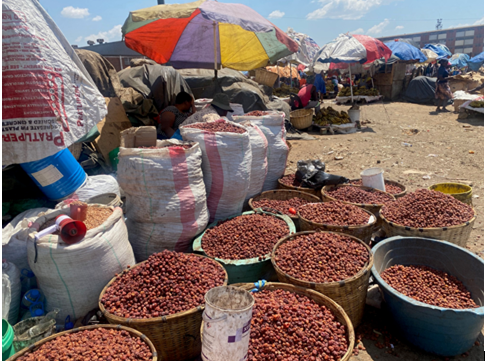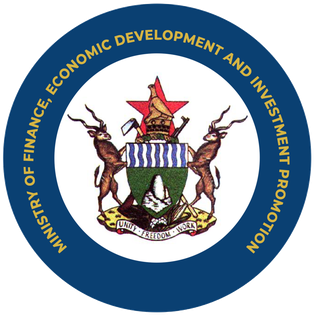
IN recent years, the advent of satellite internet services such as Starlink has revolutionised access to the internet, particularly in underserved regions. Zimbabwe, a country characterised by economic challenges and infrastructural limitations, is witnessing a significant shift in the landscape of internet service provision.
Local companies are responding to the competitive pressure exerted by Starlink by lowering their prices and improving service delivery.
This article explores the implications of this trend, draws on regional experiences, provides current statistics on internet usage in Zimbabwe, and discusses actionable solutions for consumers and service providers.
The emergence of Starlink
Starlink, a SpaceX project, aims to provide high-speed internet globally through a constellation of low earth orbit satellites.
Launched in various phases since 2019, Starlink has made strides in offering connectivity to remote and rural areas where traditional internet service providers (ISPs) have struggled.
In Zimbabwe, where many areas lack reliable internet infrastructure, Starlink’s entry to the market has prompted local ISPs to rethink their service offerings.
Local ISPs respond
- Zimbabwe yet to receive Starlink application
- Is Africa ready to join the IoT revolution?
- Starlink : A potential lifeline for rural Zimbabwe
- Telcos face disruption as Elon Musk’s Starlink eyes Zim
Keep Reading
As Starlink gains traction, local ISPs such as Econet, TelOne and Liquid Intelligent Technologies are feeling the heat.
These companies have historically faced criticism for high prices and inconsistent service quality.
However, in light of Starlink’s competitive pricing reportedly around US$110 per month for high-speed access, local providers are compelled to adjust their rates.
Price adjustments and service
improvements
Econet Wireless: As one of Zimbabwe’s largest telecom providers, Econet has introduced promotional packages and discounts on data bundles.
For instance, it recently launched a “Data Boost” campaign aimed at reducing costs for users, particularly students and small businesses.
Its mobile data prices have seen reductions of up to 20% in some packages.
TelOne: The State-owned firm has also responded by revising its pricing structure. TelOne has rolled out fibre-to-the-home services at competitive rates, with plans starting as low as US$25 per month for a basic package, making it more accessible to average consumers.
The company reported a 15% increase in subscriptions following these changes.
Liquid Intelligent Technologies: This company has focused on enhancing its infrastructure to offer better speeds and reliability.
It has introduced tiered pricing models that cater to various consumer needs, from individual users to large enterprises, with packages starting around US$35 per month.
Regional experiences: Learning from neighbours
The impact of Starlink and similar services is not exclusive to Zimbabwe; other countries in the region are also experiencing shifts in their internet markets.
South Africa
In South Africa, the introduction of Starlink has led to intensified competition among established ISPs such as Telkom and MTN.
These companies have responded by increasing their bandwidth offerings and lowering prices.
For example, Telkom offers fibre packages starting at around US$30 per month, a significant reduction from previous pricing structures, which has contributed to a 10% increase in new subscriptions.
Kenya
Similarly, in Kenya, where internet penetration has been rapidly increasing, the entry of Starlink has resulted in local firms like Safaricom and Liquid Telecom revising their pricing models.
Safaricom has launched competitive data plans that caters for a broader audience, including low-income households.
As of 2024, internet penetration in Kenya stands at approximately 88% of the total population.
Kepios analysis indicate that internet users in Kenya increased by 445 000 (+2,0%) between January 2023 and January 2024, showcasing the impact of competitive pricing.
Nigeria
In Nigeria, the presence of multiple satellite services has spurred local ISPs to innovate.
Companies like Mobile Telephone Network (MTN) Nigeria are offering flexible data bundles and enhanced customer service in response to competitive pressure.
Nigeria’s internet penetration reached 77% in March 2024, a significant recovery from previous declines.
According to Nigerian Communications Commission, the total number of active internet subscriptions grew from 158,2 million in April 2023 to 164,4 million in March 2024, reflecting the effectiveness of competitive dynamics in expanding access.
Current statistics on internet usage in Zim
According to the Zimbabwe National Statistics Agency, as of 2024, internet penetration in Zimbabwe stands at approximately 63%, an increase from 54% in 2020.
Mobile internet usage dominates, with over 90% of users accessing the internet via mobile devices.
As of 2024, there are approximately over 11 million internet users in Zimbabwe, highlighting the growing demand for affordable and reliable internet services, particularly among youth and small business owners.
Challenges and opportunities
Despite the positive changes in pricing, challenges remain. Issues such as power outages, inadequate infrastructure and regulatory hurdles still plague the internet service landscape in Zimbabwe.
Additionally, while Starlink offers a viable alternative, its high setup costs around US$499 for the hardware may limit access for many potential users.
Actionable solutions
For consumers
Research and compare: Consumers should actively compare the offerings of different ISPs, considering factors such as price, speed and reliability before making a choice.
Leverage on promotions: Take advantage of promotional offers and seasonal discounts from local ISPs to maximise value.
Advocate better services: Engage in community discussions and forums to voice concerns and push for better service delivery from providers.
For ISPs
Invest in infrastructure: Local ISPs should continue to invest in infrastructural improvements to enhance service reliability and speed, especially in rural areas.
Customer-centric innovations: Develop tailored solutions and flexible pricing models that cater to diverse customer needs, particularly for low-income users.
Collaborate: Form partnerships with technology firms to leverage on advancements that can improve service delivery and reduce operational costs.
On this score, the entry of Starlink has undoubtedly disrupted the internet service market in Zimbabwe, leading to lower prices and improved offerings from local ISPs.
By examining regional experiences, it’s clear that competition fosters innovation and enhances consumer choice.
While challenges remain, the current landscape presents an opportunity for both consumers and providers to engage in a more competitive and accessible internet ecosystem.
As internet penetration continues to rise, the focus must remain on ensuring that all Zimbabweans have access to reliable and affordable internet services, fostering economic growth and social connectivity.
- Raymond Tendai Rusinga is a writer and researcher based in Zimbabwe. He can be contacted on +263 776 206 227 or email: [email protected]. He writes here in his personal capacity.











